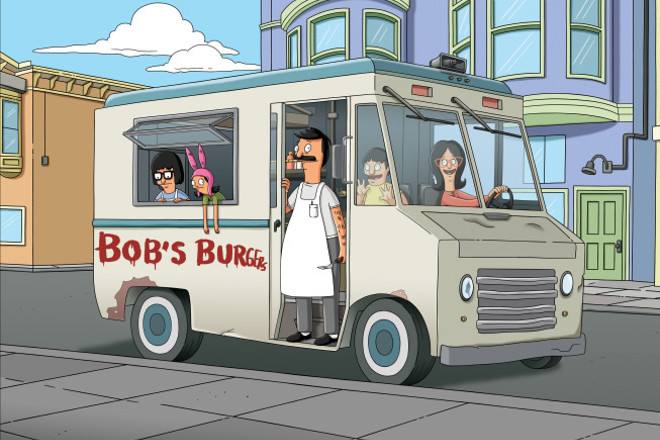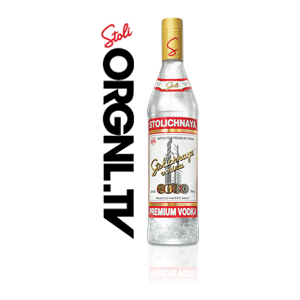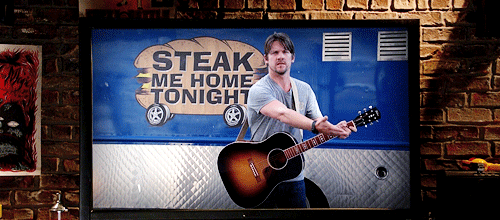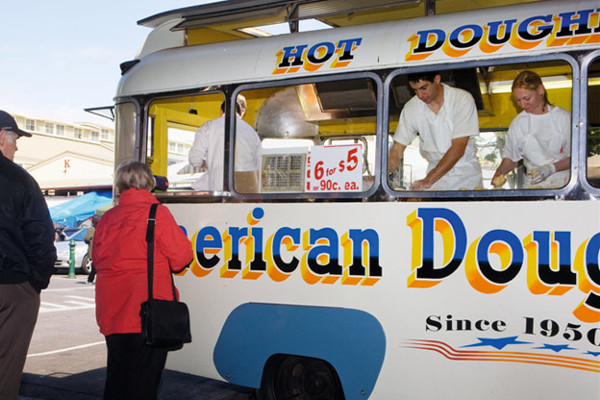Origin Stories: Where Did All These Food Trucks Come From?
Charting the history of our current movable feasts.


For more original people, places and ideas head to
Everything has its beginning — an inception point or nucleus. We’ve teamed up with ORGNL.TV, a new editorial channel by Stolichnaya Premium Vodka, to bring you a fortnightly series in which we peel back the curtain and pinpoint the moment of origin of something happening now.
–
What do C’est Cheese from Cincinnati, Grillenium Falcon from Fayetville and Wienerbago from Adelaide have in common? Well, my intrepid and tasty reader, they are just three food trucks plucked from Mobile Cuisine’s recent poll on the world’s “punniest” food truck. When a local food truck gets international attention for its name’s pun potential, it’s probably safe to say that the phenomenon’s grown into something bigger than a mere underground trend.
Cities in the US like Los Angeles and San Francisco have embraced the nexus between food and wheels for decades, and the ubiquity of food trucks is just part of the scenery in movies and TV shows set in those parts. Their story began with the chuckwagons in the 19th century, used to transport basic foodstuffs like coffee, cornmeal and preserved meats to cattlemen operating in areas without rail access. Decades later in New York, the idea turned into a cheap business opportunity and a way to keep the working class fed without having to enter saloons. Then came the horse-drawn waffle carts, the sports fan’s corndog stand, and now, of course, all sorts of food on wheels.
–
Jam donuts, footy pies and kebabs: A local evolution
Here in Australia, the history is a little less clear. In fact, up until recently, street food culture had by and large been absent in the way Aussies ate. It all pretty much started with the sweet stand at your local show. Agricultural shows were intended to ‘bring a little taste of the country to the city’, and along with the Ferris wheel, weird chook breeds and cake competitions came the food stalls required to sustain children of yore between rides. Back then, people rarely ate out and would have brought packed lunches, making sugary ice-blocks and saccharine fairy floss stalls the objects of unrivalled affection. While these early carnie-style stalls have little in common with the burger vans of today, they heralded the beginnings of outdoor, movable food in the imaginations of Aussies.
The other nucleus for outdoor food culture in Australia was a pie at the footy. Unlike a truck where customers approach the vehicle to order, pies were (and still occasionally are) bought from gangly 14-year-old kids who earned their pocket money by screaming “PIES, CHIPS, SAUSAGE ROLLS” on repeat until someone felt sorry for them and bought something.
But the most obvious pit stop for our local movable feast trend goes back to the marketplace. The ‘American Doughnuts’ stall at the Queen Victoria Markets on Elizabeth Street in Melbourne has been running since the 1950s. Even today, the queue for these deep fried jammy treats trail around the neighbouring market stalls. While not particularly special, the donuts are warm, generous and exactly what one wants after 45 minutes of rigorous haggling. This legendary truck has spawned plenty of competition over the years, including a recent Korean import: the curly potato truck. Raw potatoes carved into a spiral shape, stretched over a spike, deep fried and covered in hallucinogenically vivid yellow powder for flavour. These retail at $6. For a potato. Genius.
The classic jam donut van eventually paved way for that icon of ’90s youth culture: the suburban kebab van. The late-night, high-risk cousin to doner kebab shops that were blooming around the nation following an increase in migration from Greece and Turkey, you’d typically find a kebab van at a petrol station on the stumble home after a night out. Something about the chip fat, meat fat and bread trifecta made kebab vans the ultimate choice for young people out after dark on their way home to watch rage. Eventually, this particular foodstuff was even immortalised in both the book (1994) and film (2001), He Died With A Felafel In His Hand.
–
A gourmet u-turn
So who were the chefs that dragged mobile food fashions from their modest roots into the consciousness of young Aussie food obsessives? Who are the pioneers of this new generation? Probably the three most iconic ones in Melbourne would be Beatbox Kitchen, Taco Truck and Gumbo Kitchen.
Beatbox and Taco Truck are brainchildren of the multi-talented Raph Rashid. Having tried his hand at publishing, hip hop and t-shirts, Rashid was inspired by diner and food truck culture during his travels around the States. Working with his designer wife Beci Orpin on the two trucks, they definitely set the standard for how far things have come from the utilitarian white kebab van days. Gumbo is another great example of the trend’s evolution: former brother/sister bar owners, Michael and Genevieve Cotter, took a risk on a cuisine we’d not really seen before — authentic Creole food, served up with a side of New Orleans jazz — and in the two years since opening, they’ve become a stalwart of the scene.
Aside from strong branding, great design and delicious food, Aussie food trucks have been highly successful in using social media to bring the masses to them. Taking some of the risk and guesswork out of moving from train station to parks and even graveyards, its safe to say that almost all the successful vans out there are not only using Twitter and Facebook, but also depending on apps like ‘Where The Truck At?‘ to spread the word to hungry punters.
Of course, there have been some notable roadblocks for these meals on wheels, especially in highly publicised crackdowns by some city councils on permits. Running into complaints from traditional bricks and mortar business owners, councils like Adelaide City Council revised down the number of permits they were handing out or in some cases completely revoked them. Many councils have also been slow on the uptake in creating these permits, which is why so many food trucks tend to congregate in the same suburbs of major cities.
Looking back on their history, not much has changed for food trucks. At their core, they’re centred on fatty, warm, comforting foods, eaten with one hand while maniacally gesturing to fellow diners with the other. It’s no surprise that the restaurant industry has taken heed, with souvlaki restaurants like Gazi following the trend for cheaper fast foods that young people are most easy with. Plus, fairy floss at the show will never go out of style.
–
Bhakthi Puvanenthiran is a broadcaster, programmer, writer and editor. She’s been published in The Age, Frankie, Thought Catalog, and Crikey; made radio at RRR, 3CR and the ABC and helped program the National Young Writers’ Festival and the Melbourne Writers Festival. Follow her @bhakthi.


